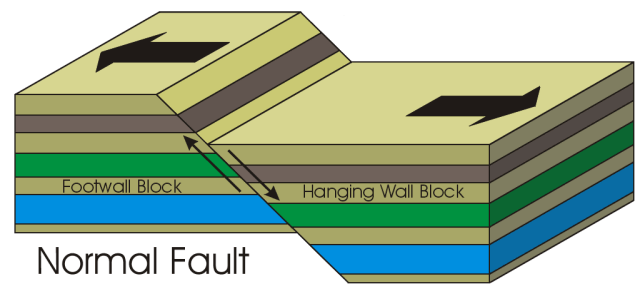Normal faults develop in areas where the land is pulling apart or stretching. The tension in the crust increases until the rocks fracture. One block of land slips downward in relation to the block of land on the other side of the fault plane.
Location |
|
